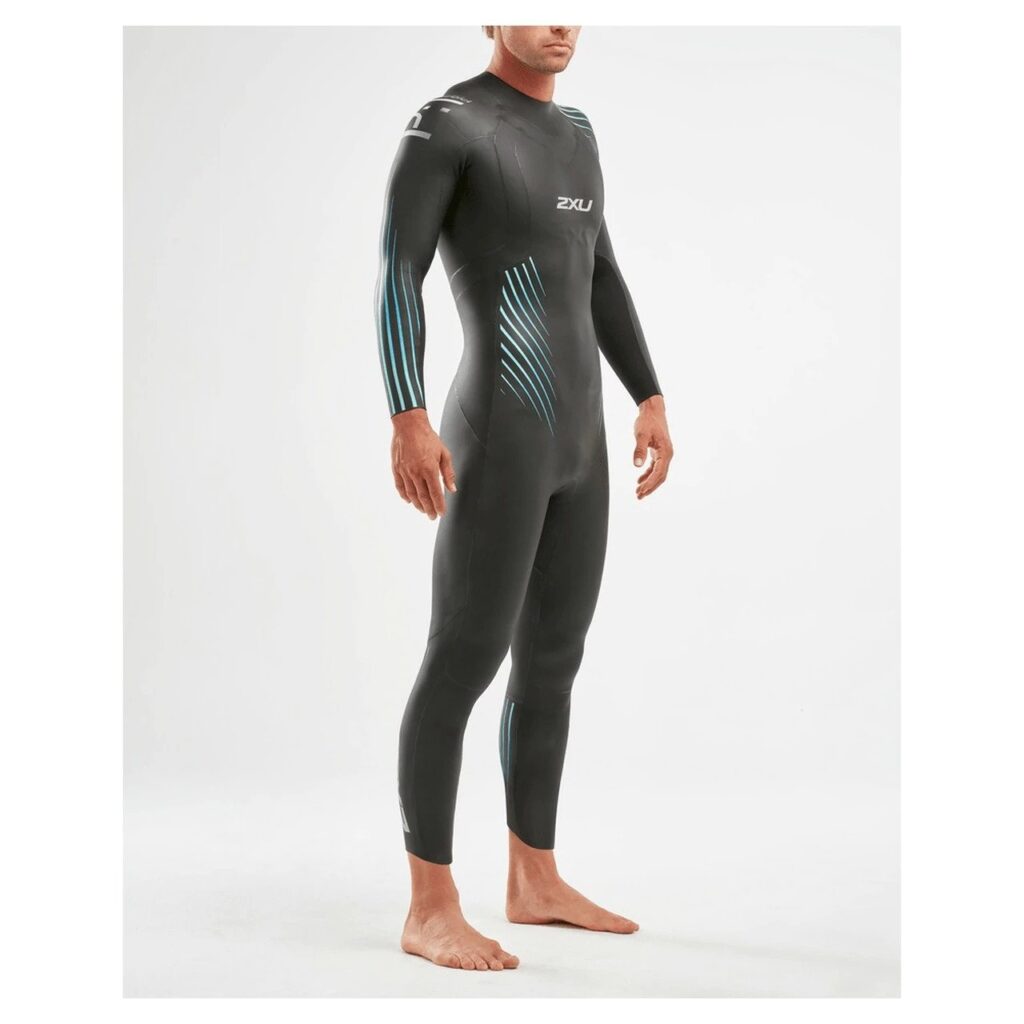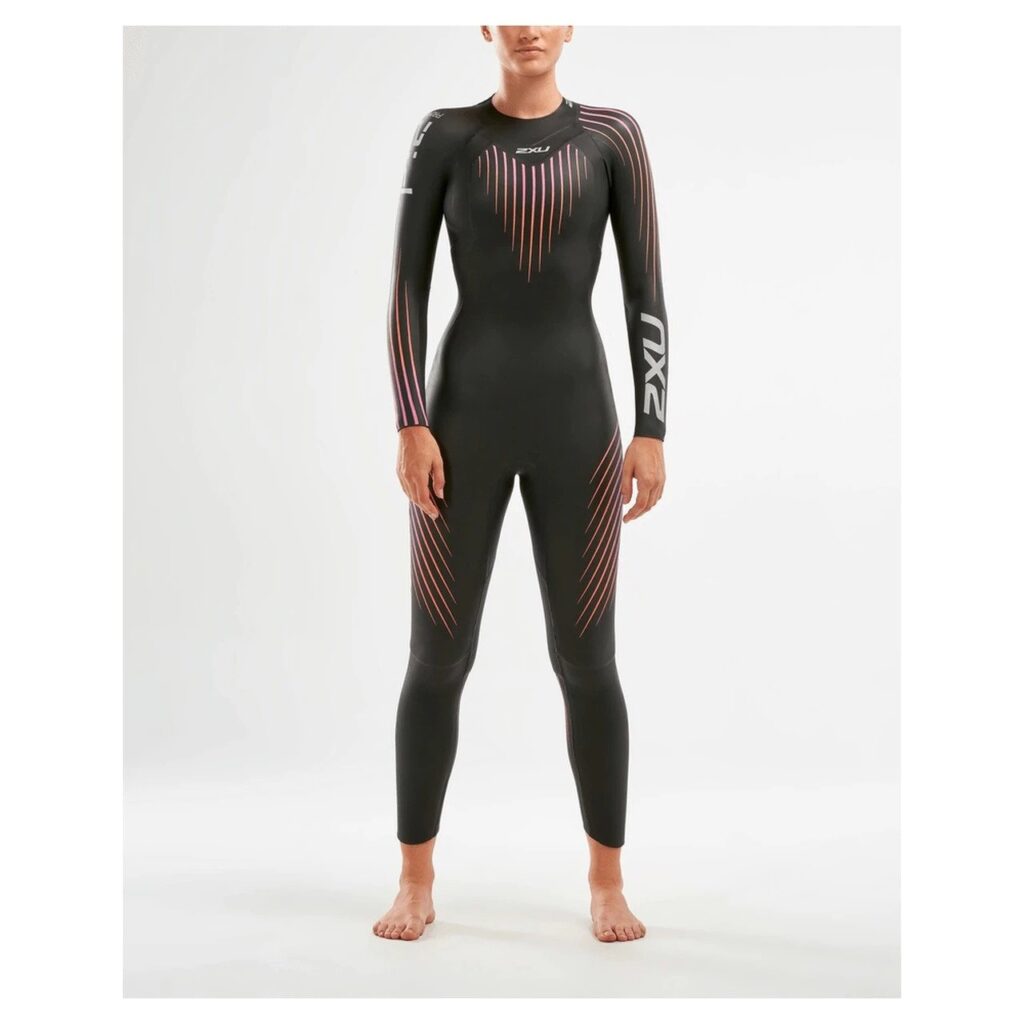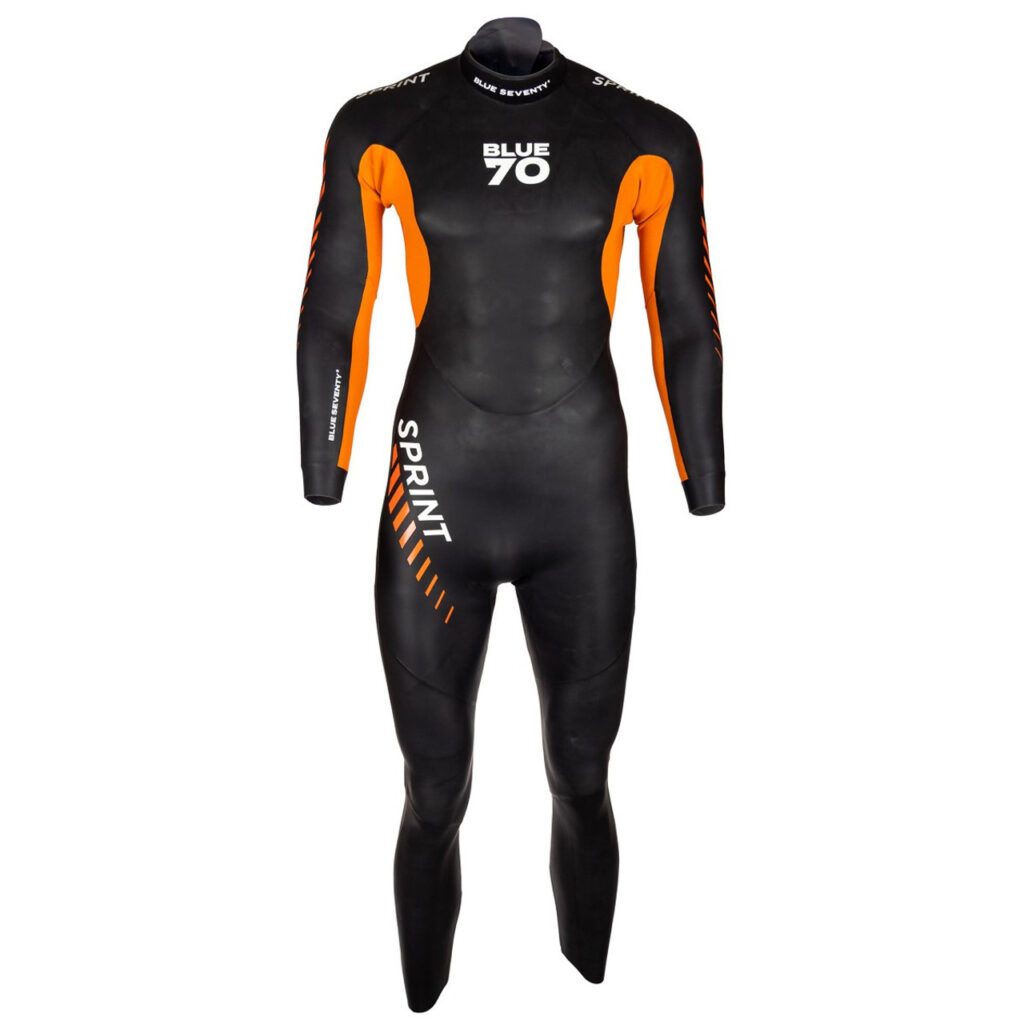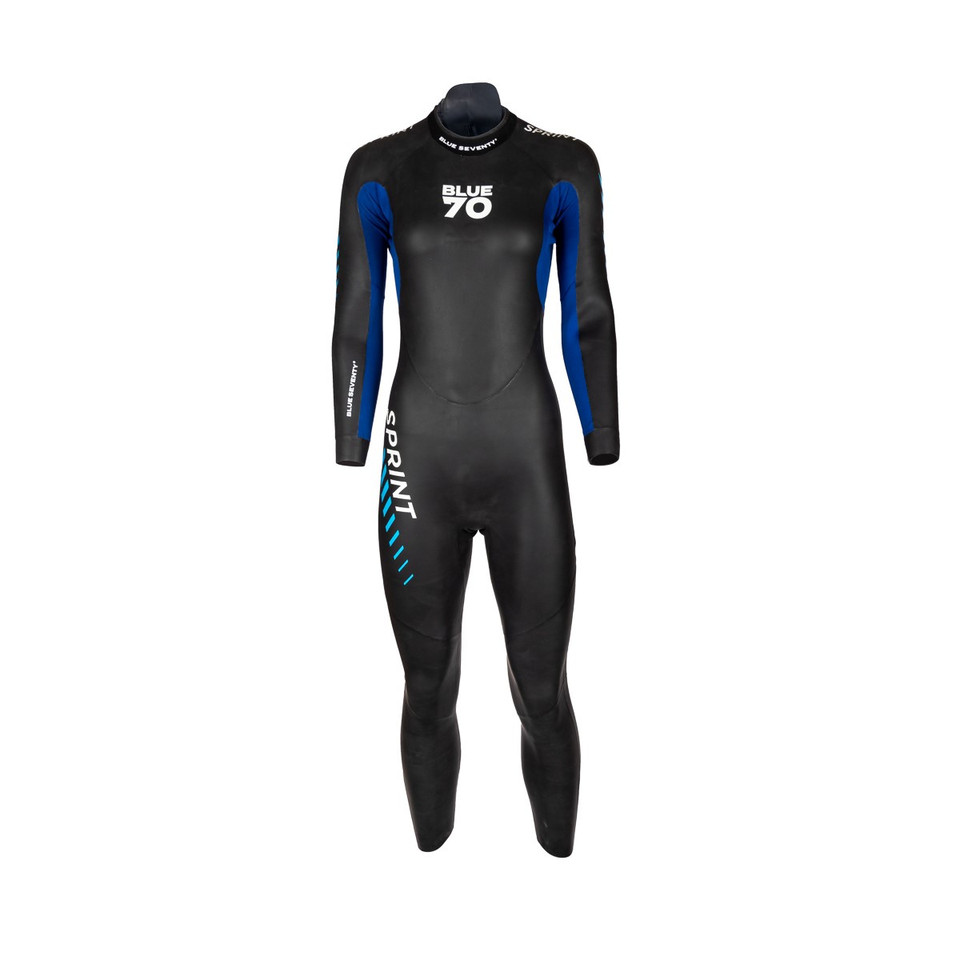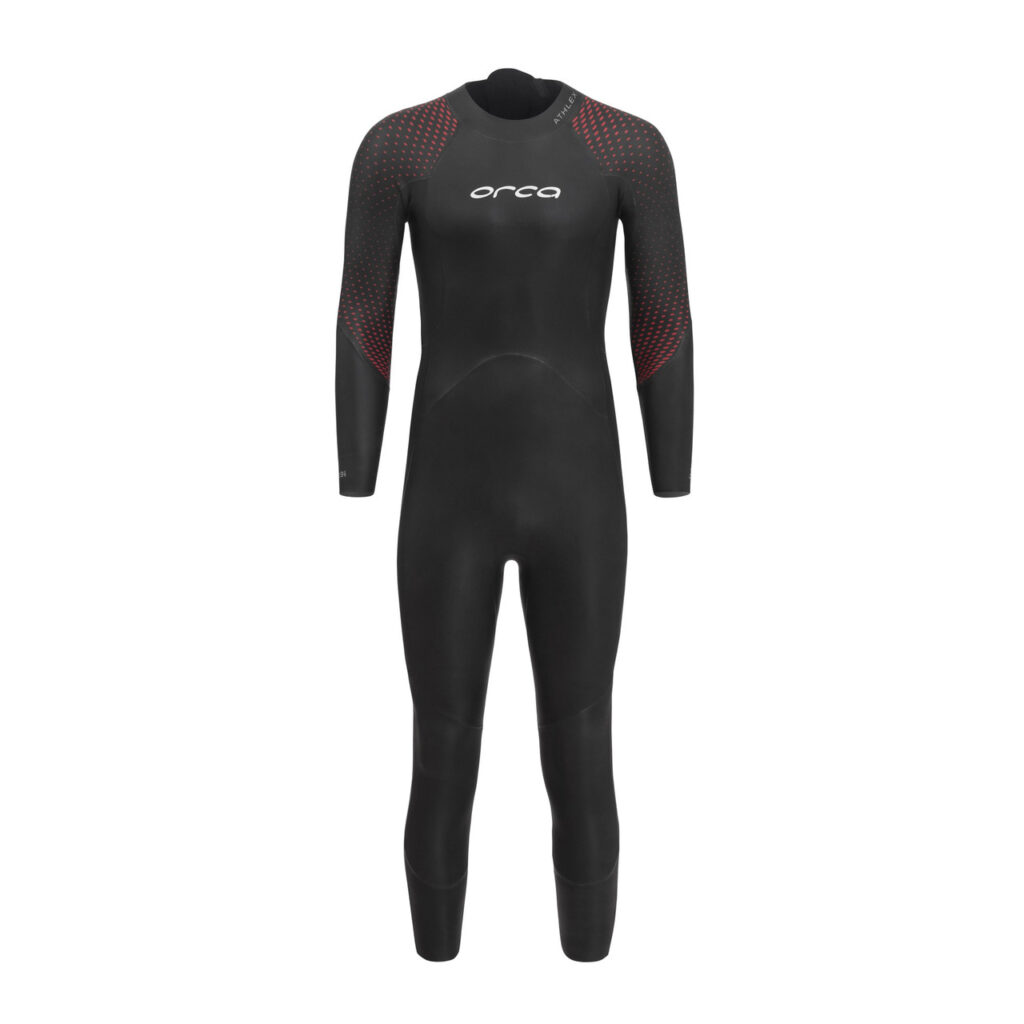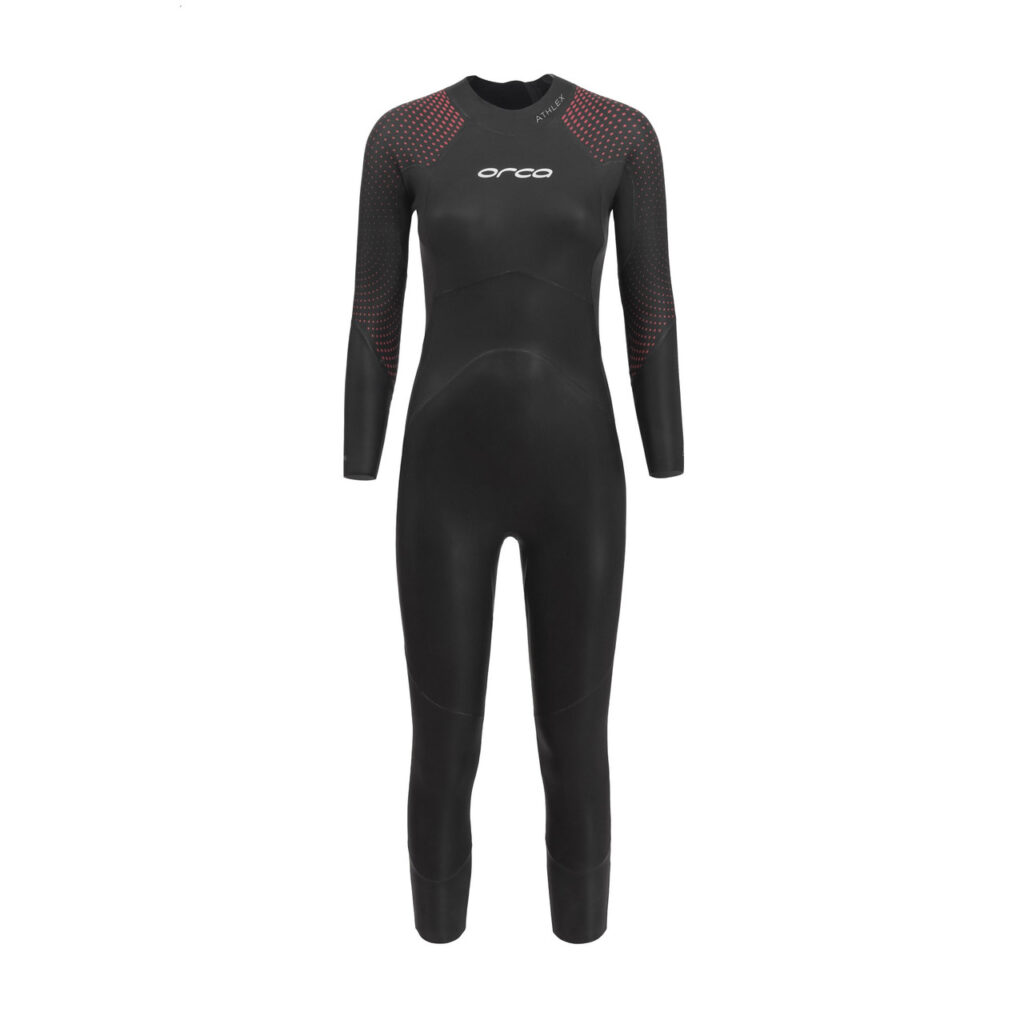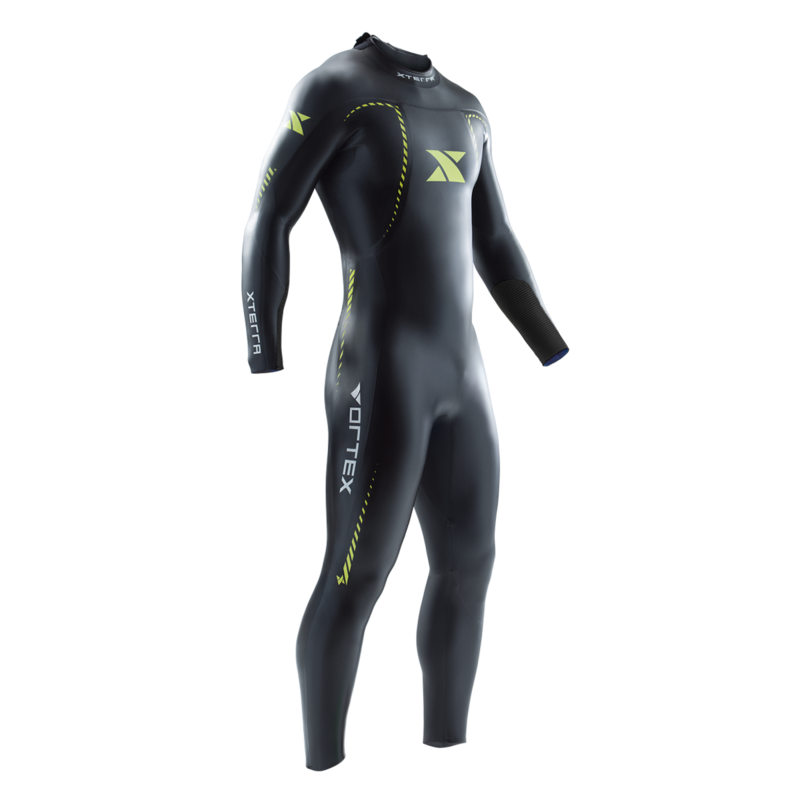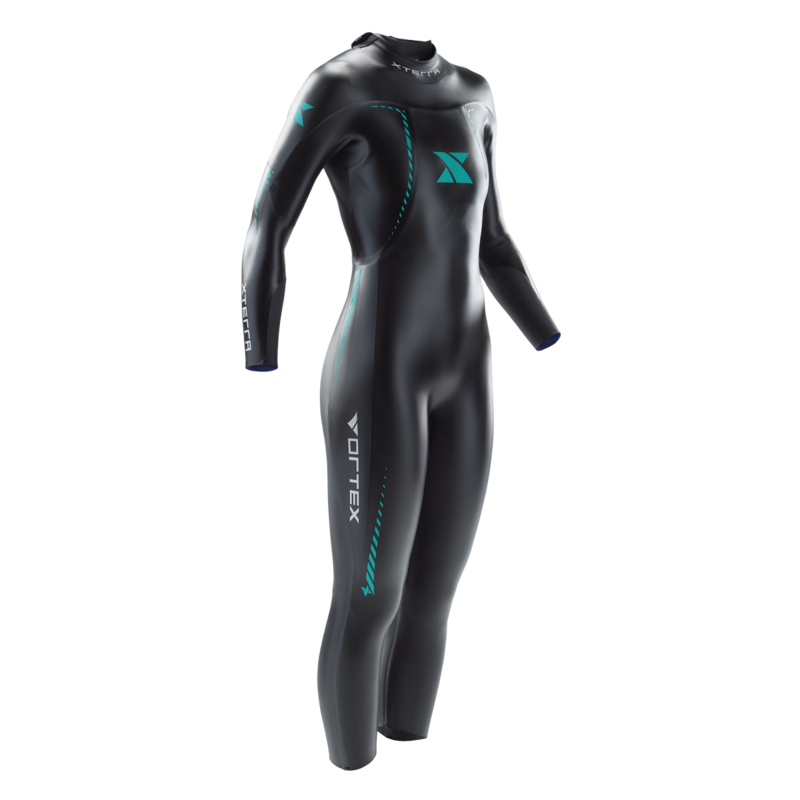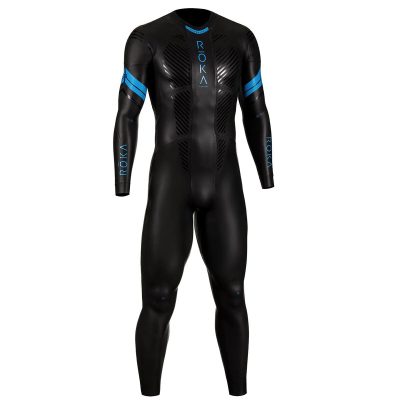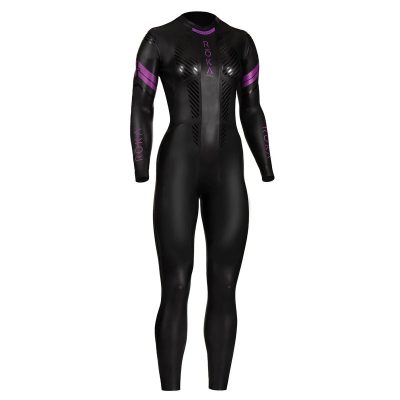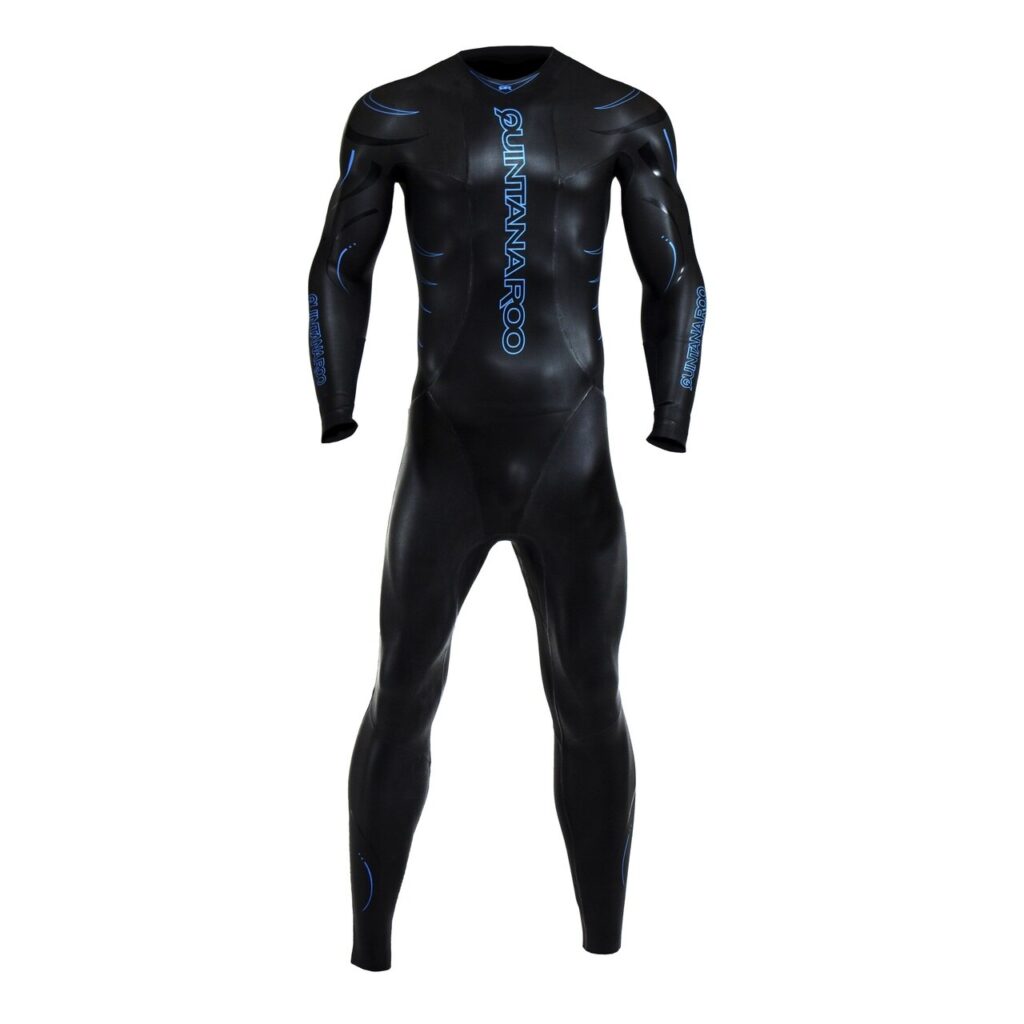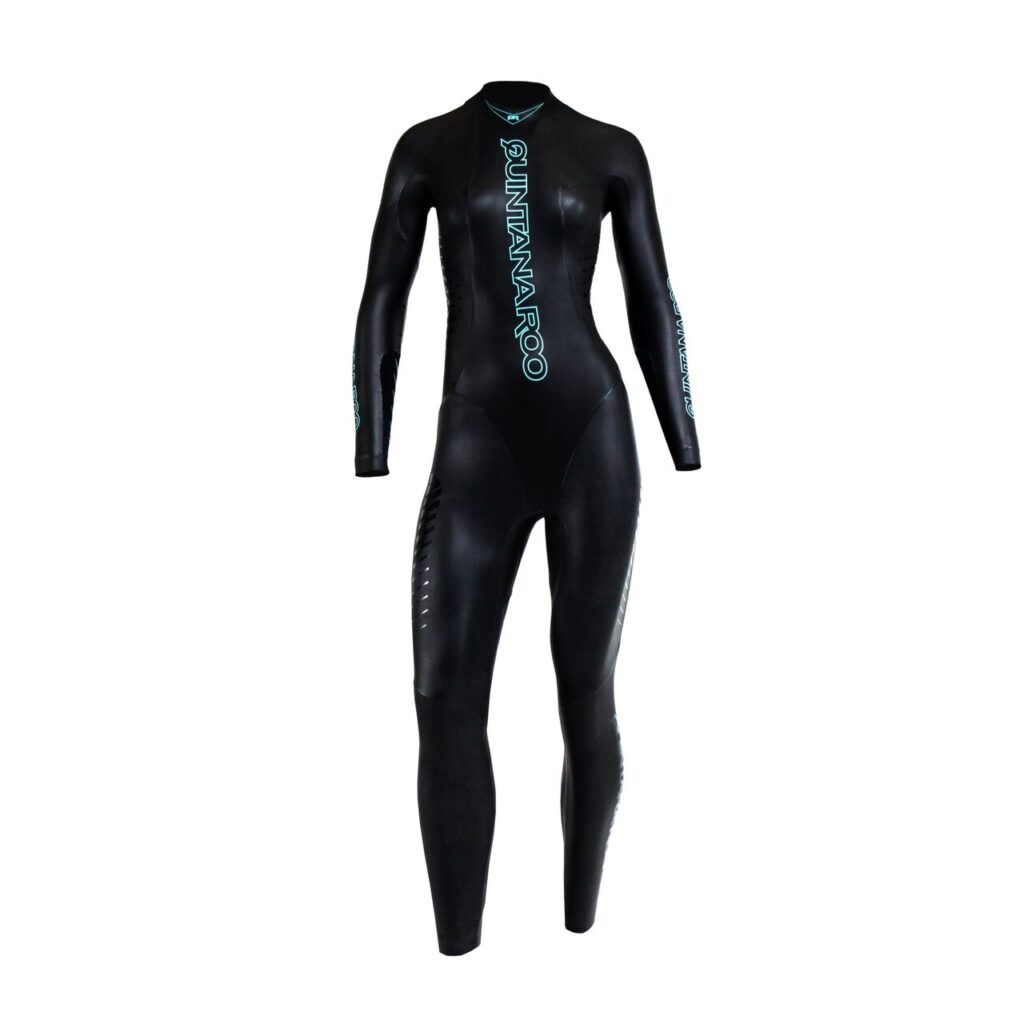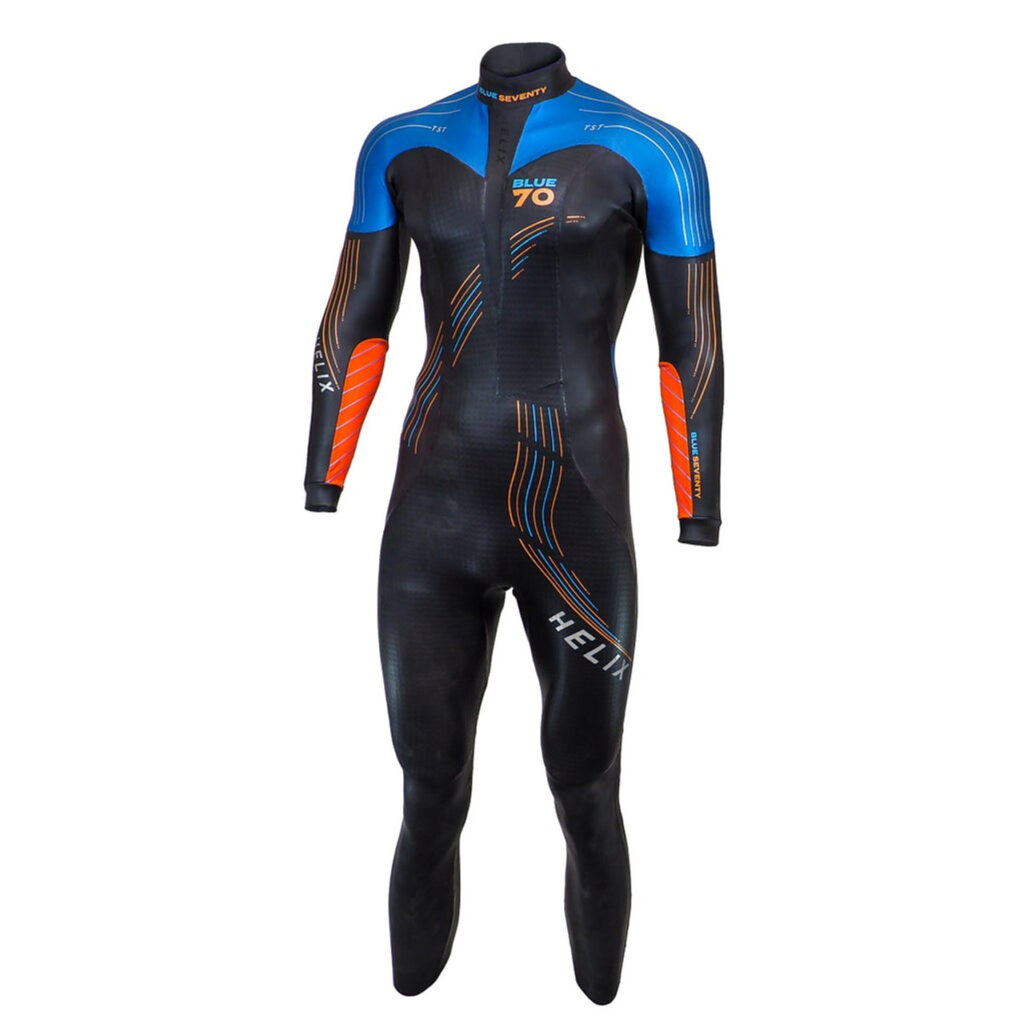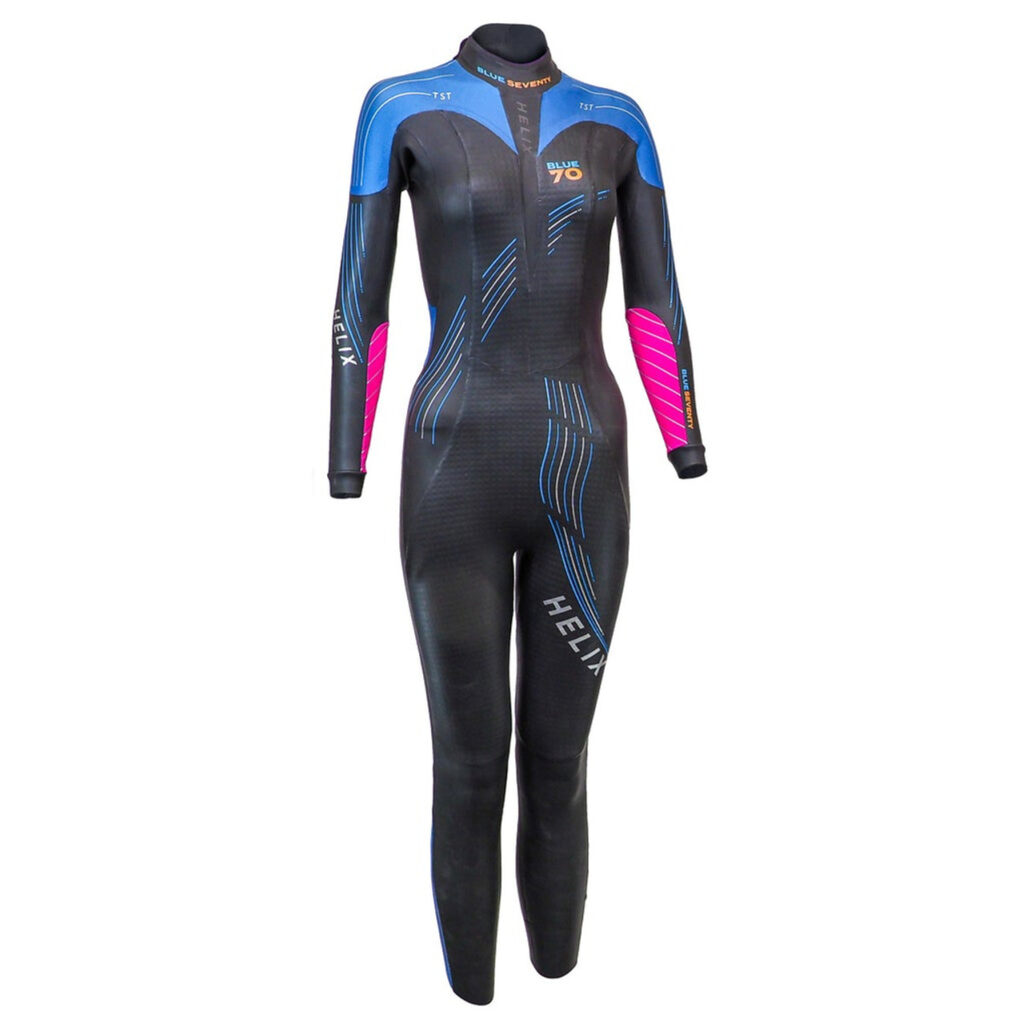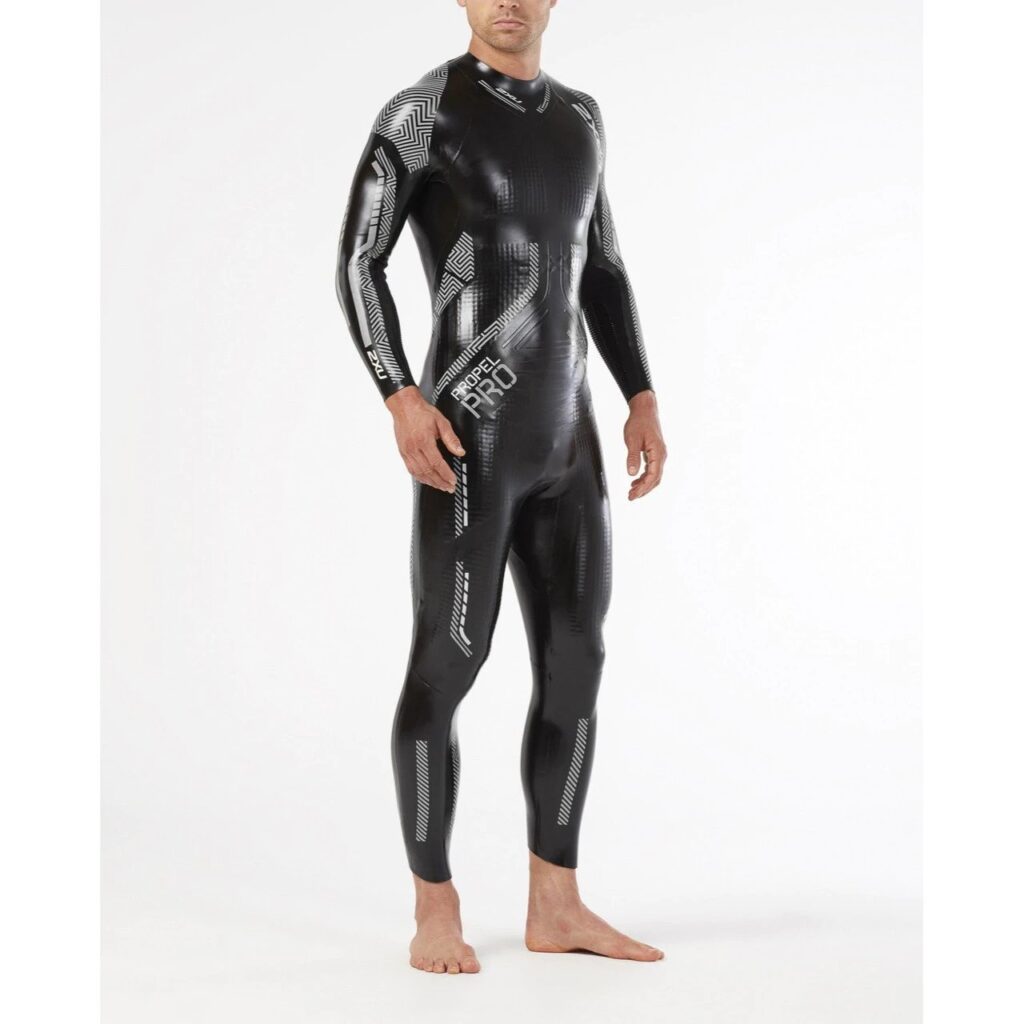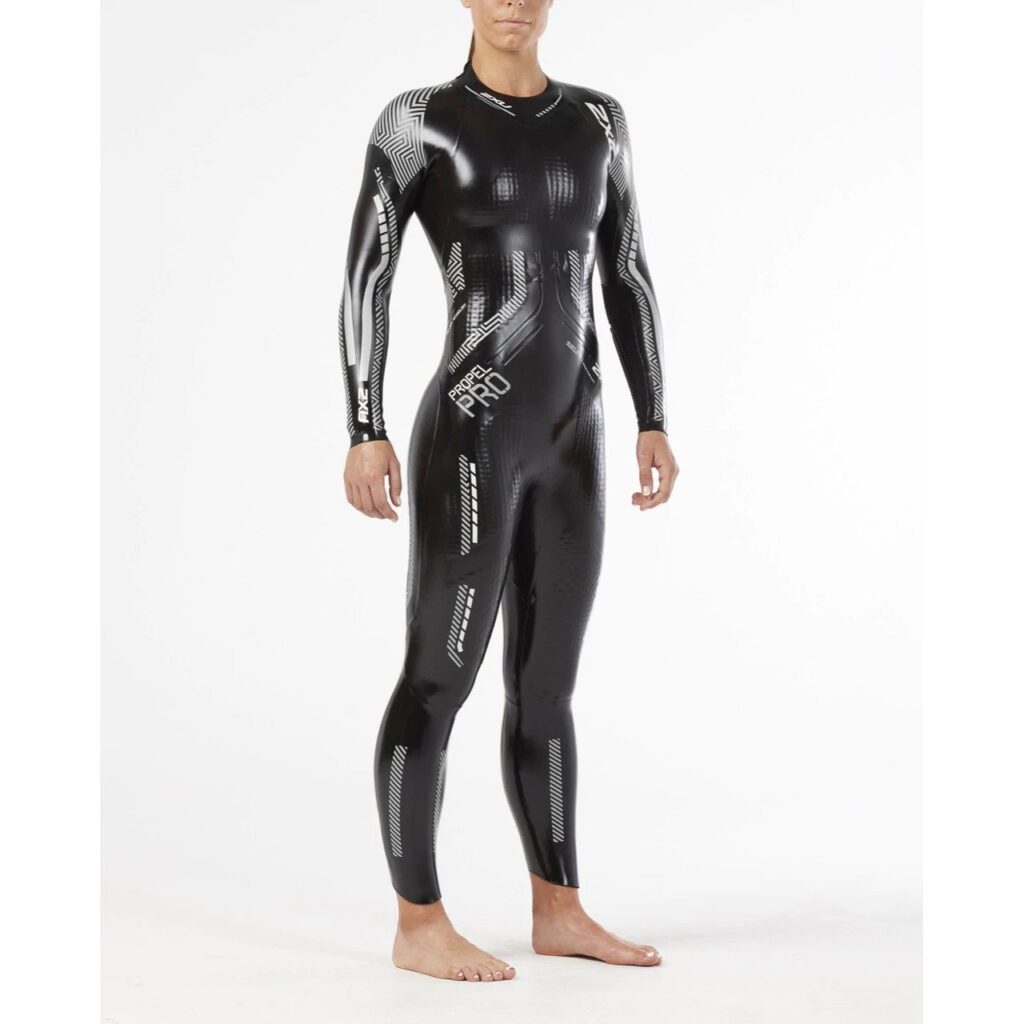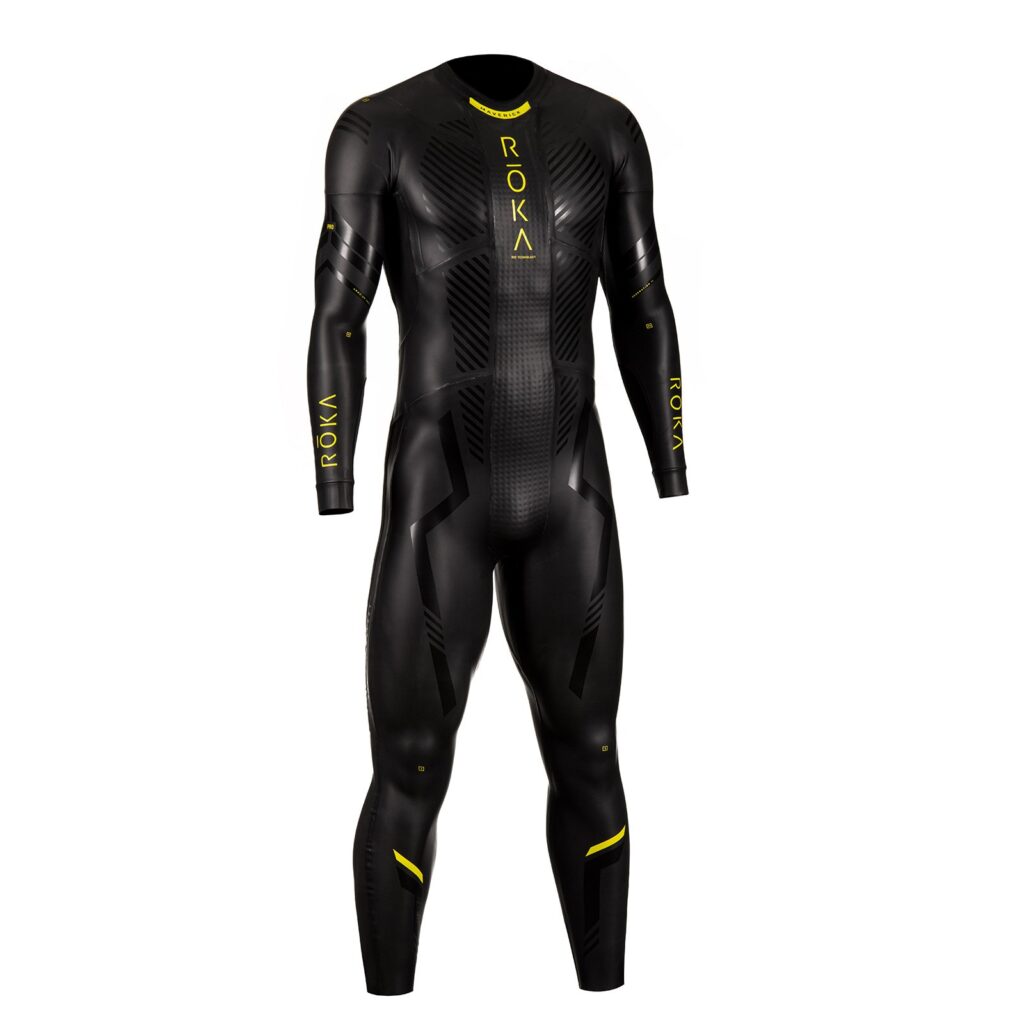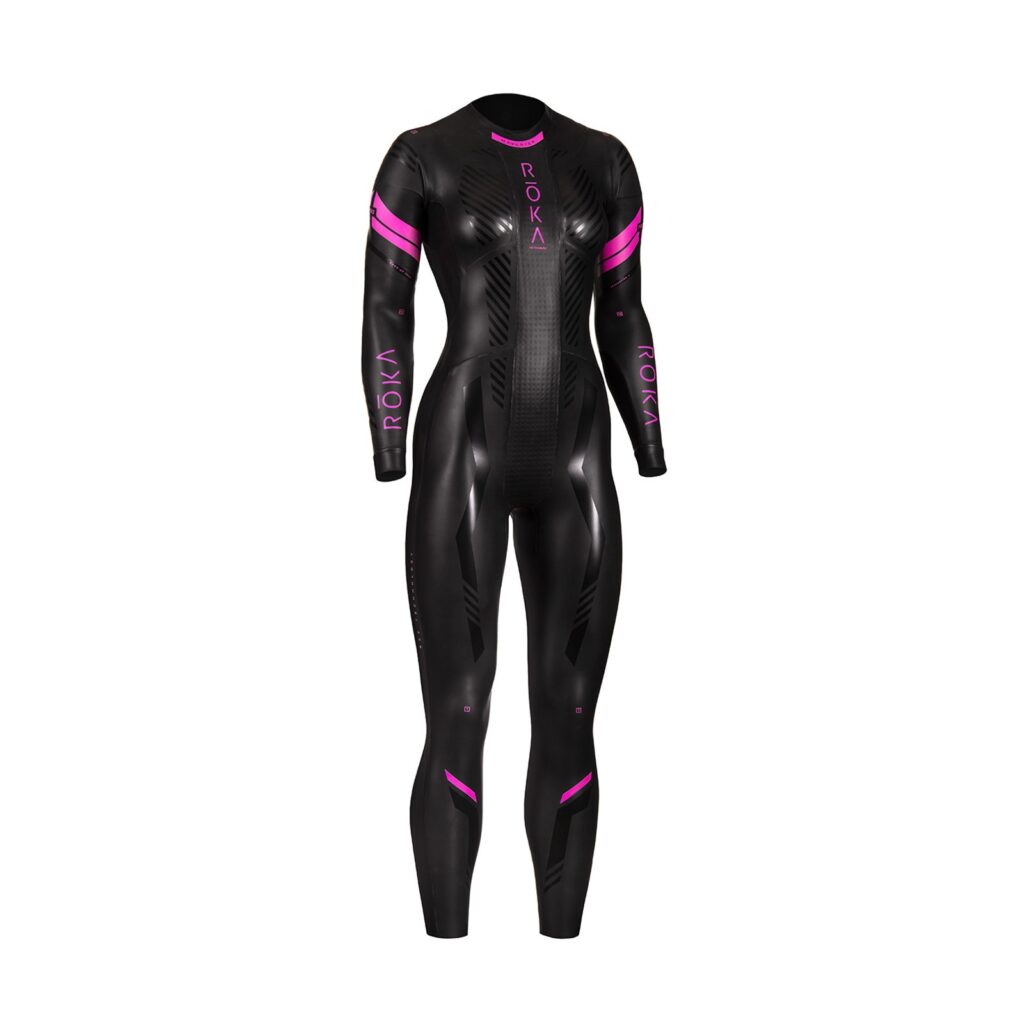Best triathlon wetsuit in 2022
How do you choose the best triathlon wetsuit for you? Read our buyer’s guide to see a breakdown of the top suits on the market right now.
(This post contains affiliate links. For more information see our disclosure here).
Introduction
A triathlon wetsuit is one of the more important pieces of kit you need to race. No matter your swimming ability, every triathlete can gain a valuable advantage from using a great wetsuit. Weaker swimmers need extra buoyancy to keep them in a horizontal position, while stronger swimmers require flexibility to allow maximum freedom of movement.
To find the best triathlon wetsuit for you, you need to consider various factors. In this article, we will outline a range of wetsuits to give you an idea of the various options.
What is a triathlon wetsuit?
A triathlon-specific wetsuit is essential if you want to maximize your performance. Whilst most wetsuits are designed simply to keep you warm, a triathlon wetsuit is built for speed and comfort. They are more flexible around the shoulders and have a smooth coating that makes you more hydrodynamic. Triathlon wetsuits are also easy to remove to allow for quick transitions during a race. You should wear a tri suit under your wetsuit to avoid having to change clothes during the race.
Do I need a triathlon wetsuit?
In short, it depends on what race you have entered. Some shorter triathlons feature swims in a pool, but most races use an open-water swim. The temperature of the water determines whether you need to use a wetsuit. The rules vary depending on the country, but generally, you will want a wetsuit if the temperature is below 78 degrees (25.5°C). For a full breakdown of the wetsuit rules in triathlon, click here.
What is the Best triathlon wetsuit?
We will be highlighting the best wetsuits are various price points, to help you find the best triathlon wetsuit for you. If you are just starting your triathlon journey, an entry-level suit will get you a great wetsuit for a reasonable price. The mid-range suits often offer the best value for your money. For more experienced athletes or those with bigger budgets, the high-end wetsuits will help you finish your swim as fast as possible.
If you are new to triathlon, we have a separate article that focuses solely on the best wetsuits for beginners.
| Name | Price band | Chest thickness | Arm thickness | Leg thickness | Who it’s for |
|---|---|---|---|---|---|
| 2XU P:1 Propel | Entry-level | 5-3mm | 1.5mm | 5-3mm | Beginner swimmers |
| blueseventy Sprint | Entry-level | 3mm | 1.5mm | 4mm | Beginner swimmers |
| Orca Athlex Float | Entry-level | 3mm | 2mm | 5mm | Beginner swimmers |
| Xterra Vortex | Mid-range | 5-3mm | 1.5mm | 5-3mm | All swimmers |
| Roka Maverick Comp II | Mid-range | 5-3mm | 1.5mm | 5mm | All swimmers |
| Quintana Roo HYDROfive | Mid-range | 4.5mm | 1.5mm | 5mm | All swimmers |
| blueseventy Helix | High-end | 5-3mm | 1.5mm | 4mm | All swimmers |
| 2XU Propel Pro | High-end | 2-1mm | 1 mm | 3-2mm | Stronger swimmers |
| Roka Maverick Pro II | High-end | 5-3mm | 1.5mm | 5mm | All swimmers |
What to look for in a triathlon wetsuit
Fit
The best triathlon wetsuit in the world won’t help you swim faster if it doesn’t fit properly. A poorly fitting wetsuit can restrict your breathing or cause painful chafing, so it is important to make sure your wetsuit fits well. A wetsuit should feel tight, but not too restricting. There shouldn’t be any excess material and your shoulders should have a full range-of-motion.
Your weight, as well as your height, is a key factor when choosing your size. Most companies offer a wide range of sizes to suit any body type. A triathlon wetsuit should also be easy to remove quickly. The material around the ankles is often thinner which makes it easier to take off.
Type of suit
The standard triathlon wetsuit has full-body coverage, which provides maximum warmth and buoyancy. However, some triathletes prefer to race in a sleeveless wetsuit. These finish at the shoulder to allow you full range-of-motion in your swim stroke. They are also easier to get out of which can be valuable in transition. Full sleeve wetsuits are more common, but if you swim in warmer waters then you may prefer to go for a sleeveless suit.
Material
All wetsuits are made from a synthetic rubber called neoprene. It is full of small air pockets that make the wetsuit warm and buoyant. The best triathlon wetsuits use neoprene made by a Japanese company called Yamamoto. Regarded as the highest quality in the world, Yamamoto neoprene is more flexible and provides better heat retention than regular neoprene. Yamamoto makes a variety of types of neoprene that have different characteristics, shown here.
Wetsuits are made up of panels of neoprene stitched together. The best wetsuits will use a variety of panels of differing thicknesses, to achieve the optimal balance between buoyancy and flexibility. They are also coated in a material called Super Composite Skin (SCS), which reduces the surface resistance from the water, allowing you to swim faster.
Flexibility
It is crucial that your wetsuit doesn’t negatively impact your swimming technique. It needs to be flexible enough around the arms and shoulders to allow you a full range-of-motion. A poorly fitting or badly designed wetsuit will cause excess fatigue or force you to shorten your stroke. High-quality wetsuits use a very thin and flexible neoprene around the shoulders, so will have little impact on your form.
Buoyancy
The buoyancy of a wetsuit is determined by the quality and thickness of the neoprene, and where it is used on the suit. The neoprene in triathlon wetsuits ranges from 1mm to 5mm thick. Generally, the thicker the neoprene is, the warmer and more buoyant it will be. A buoyant wetsuit will keep you high in the water, allowing you to swim more efficiently.
Wetsuits aimed at beginner swimmers often use 5mm neoprene on the legs to help maintain a more horizontal position. However, there is usually a trade-off between buoyancy and flexibility. More experienced swimmers may prefer a thinner suit as too much buoyancy can hurt their good technique.
Price
As with all things, you will get a higher quality wetsuit if you are prepared to spend more money. However, not every triathlete will want the best wetsuit on the market. Your choice of price point should depend on your budget and your goals in triathlon.
Entry-level wetsuits are perfect for people who are just getting into triathlon or aren’t too concerned about their finishing time. They are good quality and will allow you to complete your swim in comfort. As you progress in the sport, you may prefer to go for a mid-range wetsuit. These often provide the best value, as the technology on the best wetsuits can filter down over time. High-end suits use the highest quality materials and a wide range of neoprene thickness. This allows them to strike the perfect balance between buoyancy and flexibility.
Whilst the cheaper wetsuits are generally aimed at beginners, you can still get more expensive suits that are aimed at weaker swimmers. If you have a large budget, then a more expensive suit will be faster and more comfortable, whatever your swimming ability.
Full disclosure: Some of the links below are affiliate links. If you buy something through one of the links, we receive a small commission, at no extra cost to you. This helps keeps the website running. Thank you for your support.
Best Entry-level triathlon wetsuits
Great for beginner swimmers
The P:1 Propel is a great entry-level wetsuit that offers many of the features of 2XU’s more expensive suits. It is a great choice for someone who wants a quality wetsuit but doesn’t want to break the bank.
The Yamamoto 39 Cell front buoyancy panel is 5mm thick, giving optimal buoyancy and insulation. This wetsuit will keep you comfortable in temperatures as cold as 50 degrees (10°C). The neoprene on the legs ranges from 3mm to 5mm, providing valuable buoyancy for novice swimmers who struggle to keep their legs up. However, stronger swimmers may prefer a thinner wetsuit that offers a more natural feel. The arms are just 1.5mm to ensure the suit doesn’t restrict your stroke.
The SCS coating reduces the surface resistance from the water, allowing you to move faster for less effort. It also makes it easier to remove the suit in transition. This coating is one of the crucial factors that separate a triathlon wetsuit from a regular wetsuit.
2XU offer a wide range of sizes including ‘tall’ varieties, so you should be able to find the perfect fit for you. The neckline is quite low-cut to help prevent wetsuit rub, which can be very irritating.
All 2XU wetsuits come with a 2-year warranty so you can be confident it won’t let you down on race day. If you are looking for a great triathlon wetsuit at a reasonable price, the P:1 Propel is a fantastic choice.
Top features
- High-quality Yamamoto neoprene
- Maximum leg buoyancy
- SCS coating increases speed
- Great for cold water
Great for beginner swimmers
Blueseventy are regarded as one of the highest-quality wetsuit producers in triathlon. Their experience with top-end wetsuits has allowed them to make an entry-level wetsuit that is much superior to other brands.
The blueseventy Sprint is a wetsuit designed for maximum flexibility. The 1.5mm neoprene on the arms and the stretch jersey material in the arm gussets are the key features behind this flexibility. This gives your arms a full range of motion and prevents the fatigue that you may encounter in a more restrictive wetsuit.
Yamamoto neoprene with an SCS coating makes sure you will move quickly through the water. There is also thin stretch material around the ankles to make removing the suit quick and easy. This version of the suit now has a lower profile neck design that reduces chafing, a problem that many beginner triathletes encounter.
The 3mm chest panel and 4mm leg panels are designed to keep you in a horizontal position and reduce drag. However, this will not provide as much buoyancy as a 5mm wetsuit. For this reason, the Blueseventy Sprint may be a better choice for beginners who are more confident in their swimming form.
Top features
- High-quality Yamamoto neoprene
- Buoyancy profile improves body position
- Thin ankle panels
Great for beginner swimmers
Orca have three different Athlex models which are suited to different types of triathletes. The Flex is designed for maximum flexibility, the Float has the highest buoyancy, and the Flow lies somewhere between the two. For beginner swimmers, we recommend the Float as it will improve your technique and is cheaper than the other options.
The Athlex Float has all the features you would want in an entry-level wetsuit. Yamamoto 39 neoprene provides excellent buoyancy and flexibility at an affordable price. Buoyancy is the priority for this wetsuit, with 5mm neoprene covering the legs and hips. This thickness also helps to keep you warm if swimming in cooler waters.
The chest and back panels use 3mm neoprene whilst the arms are 2mm to provide more flexibility. The lining of the suit is also highly elastic to improve the flexibility of the suit. This elasticity means you need to apply 35-45% less force to maintain your stroke than regular neoprene. The SCS coating also helps to make the suit move faster through the water.
Top features
- Buoyancy from 5mm neoprene on hips & legs
- Yamamoto 39 neoprene & SCS coating
- Elastic lining improves flexibility
Best Mid-range triathlon wetsuits
Great for all swimmers
Xterra are the leading triathlon wetsuit company in North America, and the Vortex is their most popular wetsuit with triathletes. It is not their top line suit, but it comes with a range of great features for a mid-price wetsuit.
5mm thick neoprene on the front provides warmth and buoyancy, while 3mm neoprene on the back allows for flexible movement. The arms and shoulders are 1.5mm thick to maintain flexibility. This thickness makes the wetsuit great for beginners who need more support in the water, or any triathlete who wants to improve their swim time.
The interior is lined with a smooth X-FLEX liner that makes taking it off a breeze. The limestone-based neoprene is more eco-friendly and makes the wetsuits even more water impermeable. The wetsuit is also available in a sleeveless version if you prefer a suit with more flexibility.
Xterra offer a 30-day money-back guarantee, even if you swim in the wetsuit, so you can be confident you will be 100% satisfied. As the fit is so important this makes a big difference in finding the best triathlon wetsuit for you. The sizing does run a little small, so make sure you test it out before the 30 days are up.
Overall this is a fantastic mid-range wetsuit that is a great choice for triathletes of all levels. It’s no surprise that you see a lot of these being worn at races. If you are a keen triathlete or a beginner with a bigger budget, the Vortex will help you swim faster and more comfortably.
Top features
- 5mm neoprene for warmth and buoyancy
- X-FLEX liner makes transition quick
- Eco-friendly neoprene
- Great returns policy
Great for all swimmers
This is a wetsuit designed for triathletes who want to go fast. The high-quality Yamamoto neoprene and a SCS coating make this fantastic choice for any triathlete. Roka also allow you to try out the wetsuit in the water and still return it which is a huge benefit.
Roka use a patented ‘arms-up’ construction, meaning the wetsuit is patterned with the arms above the head instead of at the side. This provides ultimate shoulder flexibility, allowing you to swim faster with less fatigue. The Maverick Comp II will not restrict your swimming technique at all.
Buoyancy is prioritised in the centre of the wetsuit, with a 5mm panel stretching down the middle of the torso. This provides stability and more efficient side-to-side rotation. The suit also uses a 1:3:5 buoyancy profile: 1.5mm neoprene on the arms, 3mm on the chest, and 5mm on the legs. This makes it easier to maintain perfect form in the water.
Separate rear ankle panels make getting your heel out of the wetsuit in T1 easy. These panels are also tape seamed so you can make customizations yourself if you want to shorten the leg at all.
The inner lining of the suit is also very high quality and feels great against the skin. Unlike many other wetsuits, the liner is designed to be as flexible as the neoprene on the outside. The neck panel has no seams to reduce chafing and improve comfort.
Roka market this as an entry-level wetsuit but at just under $500 it is a better fit for the mid-range category. They have also recently released a more budget-friendly wetsuit available here with many of the same features.
Top features
- Arms-up design improves flexibility
- Rear ankle panels make transition quick
- Flexible & comfortable inner lining
- Nano SCS coating improves speed
Great for all swimmers
Quintana Roo is a company that specializes in gear built for triathletes. They actually made the first-ever triathlon-specific wetsuit over 30 years ago. The HYDROfive is a newer and more affordable version of the previous HYDROsix.
This wetsuit is made only from high-quality Yamamoto neoprene, going above other wetsuits with a combination of Type 39 and 40, which makes it more flexible. It also uses fewer seams than it’s competitors, allowing the material to maintain it’s natural flexibility.
5mm neoprene on the bottom half makes this wetsuit feel very buoyant, which is great for swimmers whose legs tend to drag. It also makes the suit well insulated, something you need if you swim in colder waters. Super stretch material on the arms and catch panels on the forearms will help you swim more efficiently.
Quintana Roo allow you to test the wetsuit in the water and still return it if it doesn’t feel right for you. They also provide a 2-year warranty in case you accidentally tear or damage the suit.
The HYDROfive is a high-quality wetsuit that will suit any triathlete who wants to gain an advantage in the water. It will help you maintain great technique in any conditions by keeping you buoyant and minimizing drag.
Top features
- Yamamoto 40 Cell gives great flexibility
- 5mm neoprene on legs provides great buoyancy
- Catch panels improve efficiency
Best high-end triathlon wetsuits
Great for all swimmers
The blueseventy Helix was first released in 2006, and the company has made many upgrades over the years. This wetsuit is the seventh version of the original and is one of the best triathlon wetsuits on the market right now. If you have the budget and want to take your triathlon to the next level, the Helix can help you do so.
‘LIFT’ panels on the back of the legs make it easy to keep your legs up and avoid unnecessary drag. The chest and torso panels are also 5mm to provide warmth and buoyancy. The 40 Cell Yamamoto neoprene on the arms is high quality and ultra-thin, making the Helix feel super flexible and comfortable. This does make the suit more fragile so you need to take care when putting it on.
blueseventy also use gender-specific contouring and thinner side panels to encourage more natural hip rotation. These, in combination with the 2mm lower legs, make taking the suit off quick and easy.
This is one of the only wetsuits to use a ‘reverse zipper’, meaning you attach it at the top and zip down to put on the suit. Most people love this, as it removes friction around the neck, which makes sighting easier. It also makes it unlikely that a competitor will accidentally unzip your suit in the water. However, it can be difficult to attach on your own so you may need to ask a friend to help you.
The construction of the Helix helps to improve your body position in the water, while not restricting the range-of-motion of your arms. This wetsuit is designed to help you finish your swim as fast and efficiently as possible.
Top features
- 5mm chest panel offers maximum buoyancy
- 40 Cell neoprene gives amazing flexibility
- LIFT panels prevent legs from dragging
- Reverse zipper prevents wetsuit rub
Great for stronger swimmers
The Propel Pro from 2XU is a wetsuit built for maximum flexibility and speed. It is perfect for swimmers who don’t need any help with their form but want the best technology to help them swim as fast as possible.
2XU are very smart with their use of Yamamoto neoprene. The Propel Pro is the only wetsuit on this list to utilize the ultra-flexible 45 Cell neoprene. It is used on the 1mm shoulder and arm panels to allow for maximum freedom of movement.
The more buoyant 39 Cell is used for the front panel, but even this is just 2mm thick. This mixture gives this wetsuit the perfect balance between flexibility and buoyancy. The leg panels use a mixture of 2mm and 3mm neoprene. This doesn’t lift the legs as much as a 5mm wetsuit, so the Propel Pro is better suited for stronger swimmers who prefer a more natural feel.
The Nano SCS coating reduces surface resistance and is more buoyant than the regular SCS coating. It also makes the wetsuit more comfortable and easier to put on and remove. This is a very thin wetsuit that feels amazing to wear. It uses technology rather than thicker neoprene to provide the buoyancy you need. For this reason, it doesn’t provide as much warmth as some other wetsuits, so is better suited to warmer climates.
The Propel Pro is perfect for more advanced swimmers who don’t need the buoyancy that thicker wetsuits provide. The flexibility of this suit is almost second to none, allowing you to swim faster than ever.
Top features
- 39 Cell neoprene for great buoyancy
- 45 Cell neoprene for maximum flexibility
- Nano SCS coating improves speed and buoyancy
Great for all swimmers
The Maverick Pro II is an improvement on the Comp II but offers many of the same features. You still have the ‘arms-up’ construction, the 1:3:5 buoyancy profile, SCS coating, and rear ankle panels. However, the additional upgrades help to make this one of the fastest and most comfortable wetsuits on the market.
One of the key enhancements is higher-quality neoprene. The Pro II uses Yamamoto 40 to improve the flexibility of the suit. Your shoulders will be able to move more freely and comfortably. The ultra-premium liner also improves the comfort of the suit, plus the armpits use a high-stretch liner for added flexibility.
Another addition to the Pro II is the use of an Aerodome centerline panel. This 5mm neoprene has numerous air holes which makes it more buoyant than regular neoprene. The suit also uses panels on the outside of your hips and legs to encourage rotation.
There are plenty of great quality wetsuits that are cheaper than the Maverick Pro II. However, if you are a serious triathlete who wants to maximise the performance gains from your kit, you won’t find a better wetsuit at this price. Don’t forget, you can test the suit out in the water and still return it if you have any issues.
Top features
- Yamamoto 40 Cell improves flexibility
- 5mm Aerodome provides stability and buoyancy
- Ultra-premium comfort liner
- Arms-up construction
How to care for your triathlon wetsuit
If you have spent time researching the best wetsuit to buy and invested a chunk of money in it, you will want to take good care of it. Follow these steps to extend the life of your wetsuit and get more value out of it.
Clean after every use
Triathlon wetsuits can take a beating during a race, often getting covered in sand and saltwater. It is important to rinse it with fresh water after every use to keep it in top condition. An easy way to do this is by taking it into the shower with you. You can use a little wetsuit shampoo if it needs a more thorough clean. Never use a washing machine or normal detergents.
Dry thoroughly
Drying the wetsuit before storing it is equally important. Hang the suit inside out after rinsing it, ideally from the waist so it doesn’t stretch around the shoulders. Once the inside is dry, flip the suit to dry the outside. Avoid hanging it in direct sunlight and never use a tumble dryer.
Store correctly
Folding the wetsuit carefully is the optimal way to store it. Fold it behind the knees and then in half, but try to avoid hard creases. Alternatively, you can use a wetsuit hanger, but don’t use a regular coat hanger as it can stretch the suit. Keep hold of the piece of fabric that covers the Velcro on the neck, as the Velcro can damage the neoprene.
Take care when using
Take your time when putting on the suit, as it can be easy to rip the thin neoprene with your fingernails. Don’t lend it to a friend as they could stretch it unless they are the exact same size as you. Finally, avoid using petroleum-based lubricants as these can damage the suit.
Conclusion
Having a good quality wetsuit that you feel comfortable in is important for triathletes of all abilities. Hopefully, you now have the tools to buy the best triathlon wetsuit for you. We have tried to highlight the best wetsuits at various price points to help you decide what you want from your wetsuit.
We recommend going for the best wetsuit you can reasonably afford. You don’t want to regret going for a cheaper wetsuit that causes you problems on race day. Having said that, there’s no need to go for a high-end wetsuit if your finishing time isn’t important to you.
Just getting started with open water swimming? Check out our best swim buoys guide to make your swim safer and more convenient.
Still new to the sport of triathlon? Check out our guide to all the essential kit you need to complete a race. If you need some goggles to complement your new wetsuit, we have a buyer’s guide to the best triathlon goggles.
You may also want to buy a tri suit to wear under your wetsuit. We have detailed guides to the best mens and womens tri suits to help you choose.
You might also like
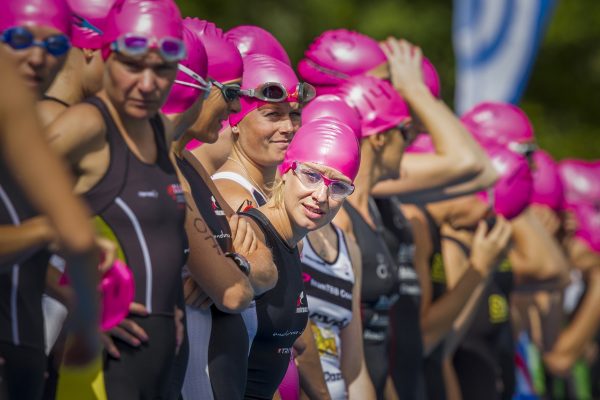
Best tri suit for women
Buyer's guide
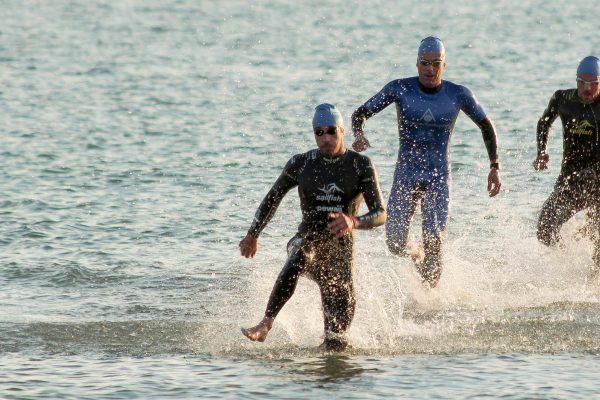
Best Triathlon Wetsuit For Beginners
Buyer's guide
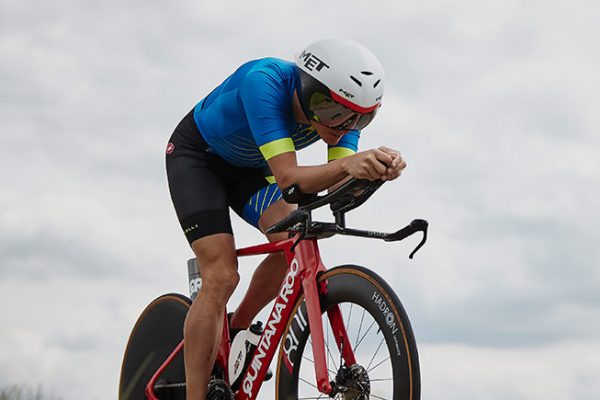
Best Tri Suit for men
Buyer's Guide
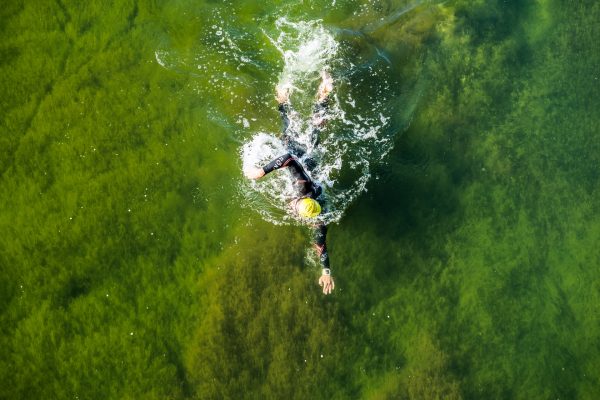
Triathlon wetsuit care
Look after your kit
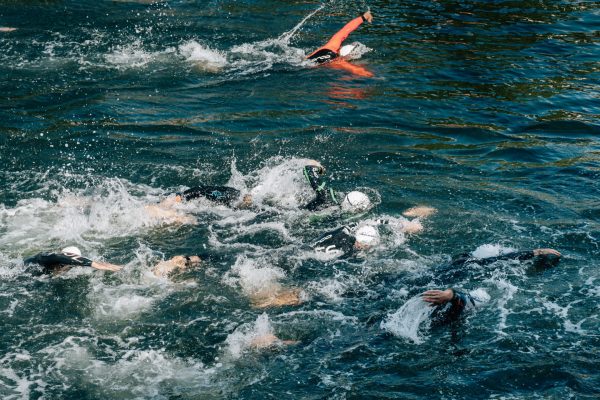
Triathlon Wetsuit Rules
Temperature Guide
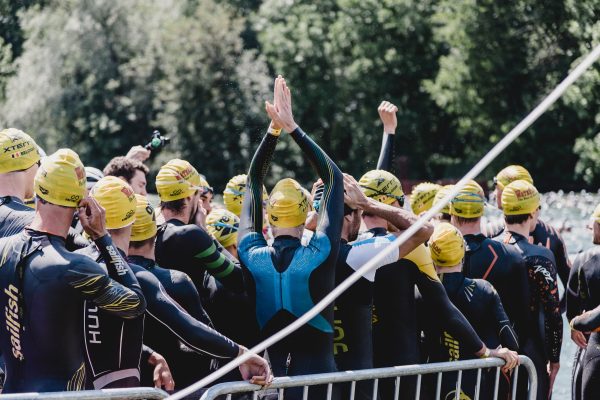
How to take off a triathlon wetsuit
Race Day Tips
Email: contact@smarttriathlete.com
